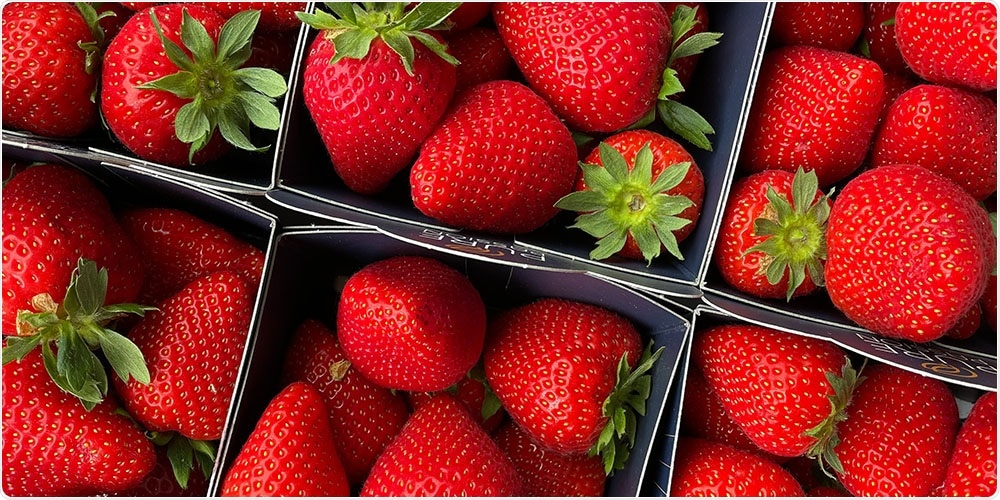Food production deals with deceitful practices, particularly false claims of geographical origin, which result in billions of dollars in economic damage each year. Botanists from the University of Basel recently created a model that can be employed to ascertain the origin of food effectively in a cost-effective manner.

The botanists tested and validated their model on a unique delta-O-18 reference dataset for strawberries. Image Credit: Unsplash.
Olive oil from Italy or strawberries from Switzerland are generally sold at higher costs when compared to the same products from other countries. The food industry and the authorities jointly waste a huge amount of time dealing with false declarations of geographical origin. They are anticipated to induce an estimated USD 30 million to 40 billion a year in economic damage.
A technique used for detecting food fraud is to ascertain the δ18O (delta-O-18) value of a product sample, which characterizes the oxygen isotope ratio. Until recently, this method involved too much time along with being expensive. A case of suspected fraud involved gathering reference data from the claimed country of origin, along with comparative data from various regions to confirm or disprove the origin of the product.
Cutting costs through model calculation
Dr. Florian Cueni, Basel botanist, recently created a model along with associates from Agroisolab GmbH, a company specializing in isotope analysis. The model is designed for use in simulating the oxygen isotope ratio in plants from individual regions, avoiding the necessity for the time-consuming collection of reference data.
The model depends on precipitation, temperature, and humidity data and information about the growing season of a plant, available from publicly accessible databases.
Cueni analyzed and validated the model on an extraordinary δ18O reference dataset for strawberries gathered across Europe over 11 years. The case study elaborates that the model is capable of simulating the origin of the strawberries accurately.
Wide range of uses
With minor adjustments to the parameters, our model can be used to determine all plant products.”
Ansgar Kahmen, Professor, University of Basel
Professor Ansgar Kahmen headed the research project.
This enables simplification and speeds up traditional isotope analysis by precisely simulating the regions of origin of agricultural foodstuffs.
The model created by the Basel botanists is of particular interest to food forensics officials or the investigating authorities for testing the origin of confiscated drugs, for instance, and also private forensic institutes inspecting food or serve as expert witnesses in court.
NGOs like Greenpeace or WWF are also interested—particularly in ascertaining the origin of illegally logged timber—as is the food industry, which experiences reputational damage owing to the sale of products that might have been declared falsely.
Source:
Journal reference:
Cueni, F., et al. (2021) Using plant physiological stable oxygen isotope models to counter food fraud. Scientific Reports. doi.org/10.1038/s41598-021-96722-9.